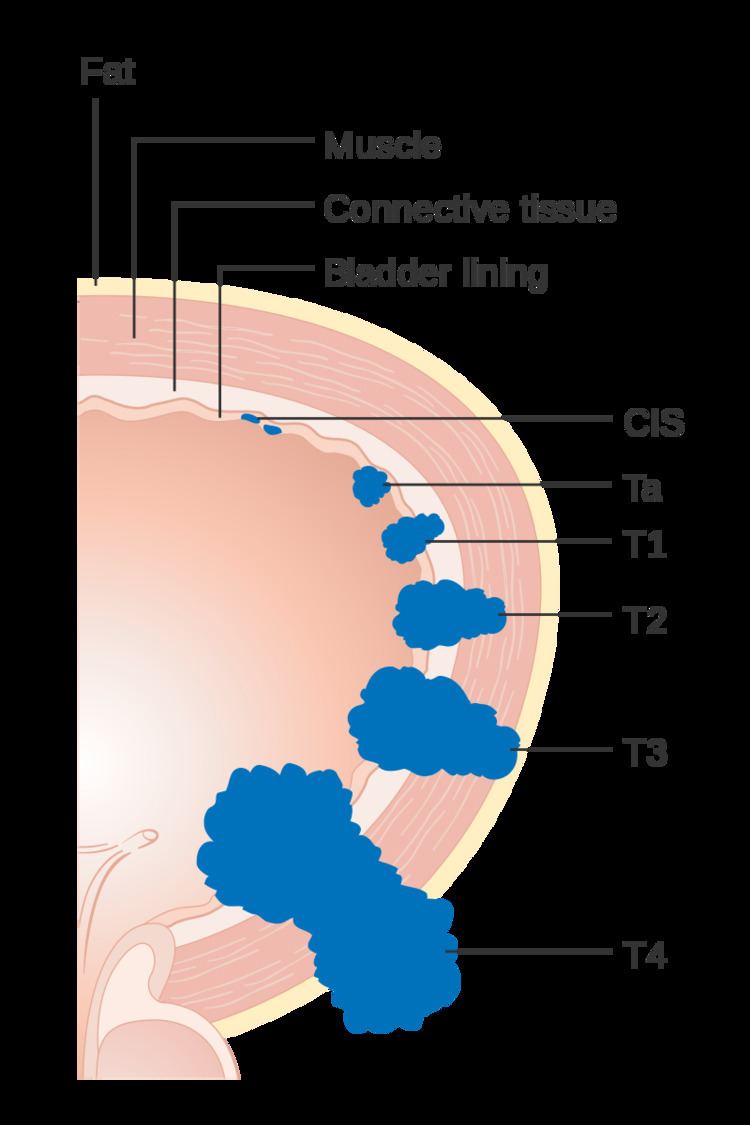The TNM Classification of Malignant Tumours (TNM) is a cancer staging notation system that describes the stage of a cancer which originates from a solid tumor with alphanumeric codes.
T describes the size of the original (primary) tumor and whether it has invaded nearby tissue,N describes nearby (regional) lymph nodes that are involved,M describes distant metastasis (spread of cancer from one part of the body to another).The TNM staging system for all solid tumors was devised by Pierre Denoix between 1943 and 1952, using the size and extension of the primary tumor, its lymphatic involvement, and the presence of metastases to classify the progression of cancer. It has gained wide international acceptance for many solid tumor cancers, but is not applicable to diffused cancers such as leukaemia and is of limited use for other cancers such as diffuse lymphoma and ovarian cancer.
TNM is developed and maintained by the Union for International Cancer Control (UICC) to achieve consensus on one globally recognised standard for classifying the extent of spread of cancer. The TNM classification is also used by the American Joint Committee on Cancer (AJCC) and the International Federation of Gynecology and Obstetrics (FIGO). In 1987, the UICC and AJCC staging systems were unified into a single staging system.
Most of the common tumors have their own TNM classification. Not all tumors have TNM classifications, e.g., there is no TNM classification for brain tumors.
The general outline for the TNM classification is below. The values in parentheses give a range of what can be used for all cancer types, but not all cancers use this full range.
Mandatory parameters
T: size or direct extent of the primary tumourTx: tumour cannot be evaluatedTis: carcinoma in situT0: no signs of tumourT1, T2, T3, T4: size and/or extension of the primary tumour N: degree of spread to regional lymph nodesNx: lymph nodes cannot be evaluatedN0: tumour cells absent from regional lymph nodesN1: regional lymph node metastasis present; at some sites, tumour spread to closest or small number of regional lymph nodesN2: tumour spread to an extent between N1 and N3 (N2 is not used at all sites)N3: tumour spread to more distant or numerous regional lymph nodes (N3 is not used at all sites) M: presence of distant metastasisM0: no distant metastasisM1: metastasis to distant organs (beyond regional lymph nodes)The Mx designation was removed from the 7th edition of the AJCC/UICC system, but referred to cancers that could not be evaluated.
G (1–4): the grade of the cancer cells (i.e. they are "low grade" if they appear similar to normal cells, and "high grade" if they appear poorly differentiated)S (0-3): elevation of serum tumor markersR (0-2): the completeness of the operation (resection-boundaries free of cancer cells or not)L (0-1): invasion into lymphatic vesselsV (0-2): invasion into vein (no, microscopic, macroscopic)C (1–5): a modifier of the certainty (quality) of the last mentioned parameterc: stage given by clinical examination of a patient. The c-prefix is implicit in absence of the p-prefixp: stage given by pathologic examination of a surgical specimeny: stage assessed after chemotherapy and/or radiation therapy; in other words, the individual had neoadjuvant therapy.r: stage for a recurrent tumor in an individual that had some period of time free from the disease.a: stage determined at autopsy.u: stage determined by ultrasonography or endosonography. Clinicians often use this modifier although it is not an officially defined oneFor the T, N and M parameters exist subclassifications for some cancer-types (e.g. T1a, Tis, N1i)
Small, low-grade cancer, no metastasis, no spread to regional lymph nodes, cancer completely removed, resection material seen by pathologist: pT1 pN0 M0 R0 G1; this grouping of T, N, and M would be considered Stage I.Large, high grade cancer, with spread to regional lymph nodes and other organs, not completely removed, seen by pathologist: pT4 pN2 M1 R1 G3; this grouping of T, N, and M would be considered Stage IV. Most Stage I tumors are curable; most Stage IV tumors are inoperable.Uses and aims
Some of the aims for adopting a global standard are to:
Aid medical staff in staging the tumour helping to plan the treatment.Give an indication of prognosis.Assist in the evaluation of the results of treatment.Enable facilities around the world to collate information more productively.Since the number of combinations of categories is high, combinations are grouped to stages for better analysis.
It is crucial to be aware that the criteria used in the TNM system have varied over time, sometimes fairly substantially, according to the different editions that AJCC and UICC have released. The dates of publication and adoption for use of AJCC editions is summarized here; past editions are available from AJCC for web download.
AJCC Cancer Staging Manual (1st ed.). 1977. — went into effect 1978AJCC Cancer Staging Manual (2nd ed.). 1983. ISBN 0397505949. — went into effect 1984AJCC Cancer Staging Manual (3rd ed.). 1988. ISBN 0397509162. — went into effect 1989AJCC Cancer Staging Manual (4th ed.). 1992. ISBN 0397512643. — went into effect 1993AJCC Cancer Staging Manual (5th ed.). 1997. ISBN 0397584148. — went into effect 1998AJCC Cancer Staging Manual (6th ed.). 2002. ISBN 0387952713. — went into effect 2003AJCC Cancer Staging Manual (7th ed.). 2009. ISBN 0387884408. — went into effect 2010AJCC Cancer Staging Manual (8th ed.). 2016. ISBN 978-3-319-40617-6. — delayed to go into effect 2018As a result, a given stage may have quite a different prognosis depending on which staging edition is used, independent of any changes in diagnostic methods or treatments, an effect that has been termed "stage migration." The technologies used to assign patients to particular categories have also changed, and increasingly sensitive methods tend to cause individual cancers to be reassigned to higher stages, making it improper to compare that cancer's prognosis to the historical expectations for that stage. A further important consideration is the effect of improving treatments over time.
Gall bladder cancer staging
